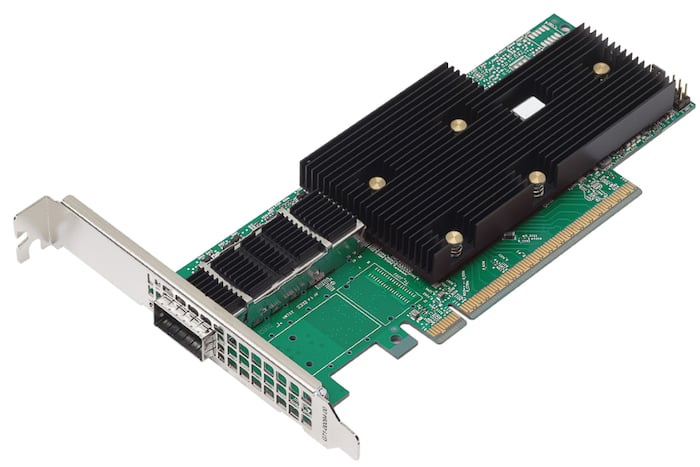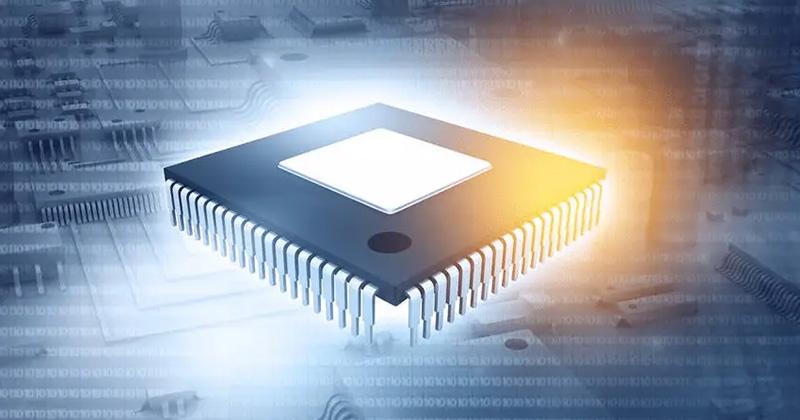
Sensor Roundup: New ICs Redefine Precision, Safety, and Efficiency
Melexis, Mitsubishi, and Novosense each recently released innovative sensor ICs that target multiple applications and enhance precision and cost-effectiveness
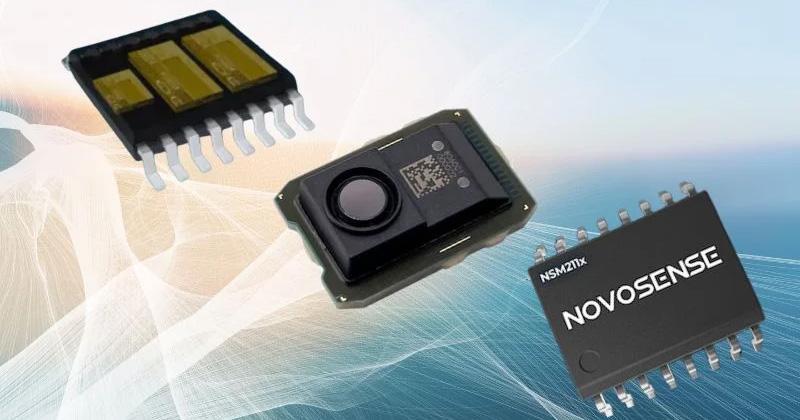
While the use cases for these ICs range from automotive braking systems to occupancy counting, they are each designed to provide safe, accurate measurements.
Integrated Brake Pedal Position Sensor from Melexis
Melexis recently introduced the MLX90424 dual-linear position sensor that integrates position sensing and a magnetic switch within a single module. This integration significantly reduces the number of separate components in traditional brake pedal systems. By consolidating these functions, the MLX904 (Link downloads datasheet PDF) minimizes assembly complexity, optimizes space, and reduces the bill of materials (BOM) component count. The MLX904 can also directly connect to a 12-V battery without a regulator, further simplifying system design and power management.
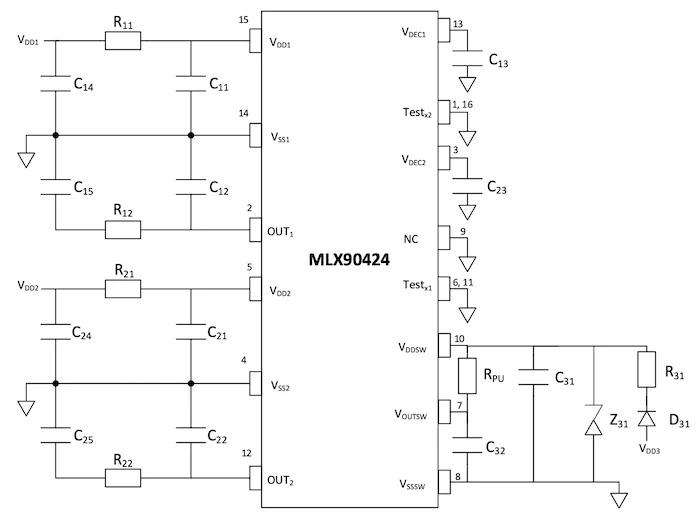
Recommended application diagram for the MLX904 in a TSSOP-16 package. Image used courtesy of Melexis (Link downloads datasheet PDF)
The sensor's linear displacement measurement capability of up to 30 mm, combined with Melexis' proprietary Triaxis Hall technology, ensures resilience against magnetic interference. With its AEC-Q100 qualification, the MLX90424 is also highly reliable in safety-critical applications. It meets the stringent ISO 26262 standards with ASIL D level integration for position sensing and ASIL B for the switch functionality. This level of integration not only supports robust braking operations but also helps protect against magnetic stray fields up to 5 mT.
Mitsubishi Launches Thermal-Diode Infrared Sensor With Wide FOV
The new MelDIR MIR8060C1 sensor from Mitsubishi Electric is a highly advanced thermal-diode infrared sensor that offers a 80 × 60-pixel resolution and expanded 100°×73° field of view (FOV). This enhancement doubles the coverage compared to previous models, enabling the sensor to precisely capture thermal data over a broader area, reducing the need for multiple units in applications that require wide-area monitoring. The wide field of view makes the MIR8060C1 (datasheet linked) well-suited for applications in elderly care facilities, air-conditioning control, occupancy counting, and body temperature measurement, contributing to safer, more cost-effective, and more efficient monitoring solutions.
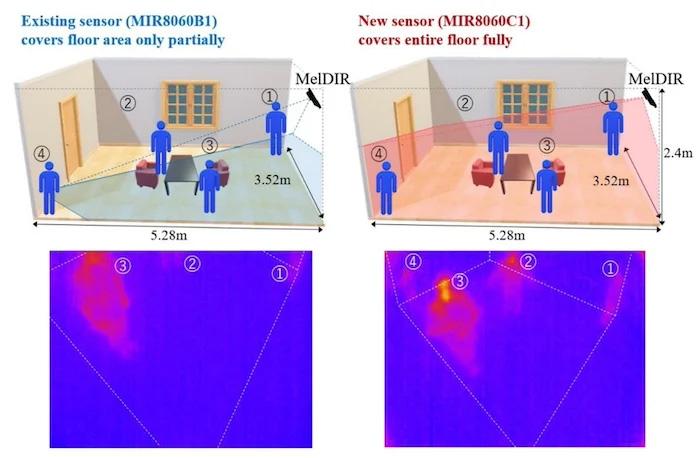
The new sensor features a wider area coverage (top) and sharper thermal sensitivity (bottom). Image used courtesy of Mitsubishi
The sensor incorporates advanced lens technology to filter out unwanted incident light, ensuring clear thermal images with little blurring. The technology, therefore, enhances detection accuracy, allowing the sensor to precisely identify people, objects, and behavior within its range. Furthermore, it helps developers looking to optimize monitoring systems. Mitsubishi's support tools may further assist manufacturers integrate this technology into their products to accelerate the development process.
Novosense Rolls Out Automotive Current Sensors
Novosense recently announced its NSM211x series of a high-performance, automotive-grade current sensors. With their "precise current measurement and robust isolation", the sensors target onboard chargers (OBC), DC-DC converters, motor control, charging station current detection, fuel cells, and other automotive applications. By integrating high isolation capabilities directly into the sensor, the NSM211x series eliminates the need for external isolation components, reducing design complexity and ensuring reliable performance even in demanding conditions.

The NSM211x. Image (modified) used courtesy of Novosense
The NSM211x sensors can rapidly respond to overcurrent conditions and provide loop control with a high -3 dB bandwidth up to 1 MHz and a response time of 400 ns. This speed is valuable in high-frequency applications where delays in current sensing could lead to inefficiencies or potential damage. Their isolation features a creepage distance of 8.2 mm and a 5,000 Vrms withstand voltage to ensure the sensors can safely interface with high-power circuits, maintaining performance while safeguarding sensitive components and users. The sensor series also integrates temperature compensation and offline calibration for high measurement accuracy for both AC and DC currents.


